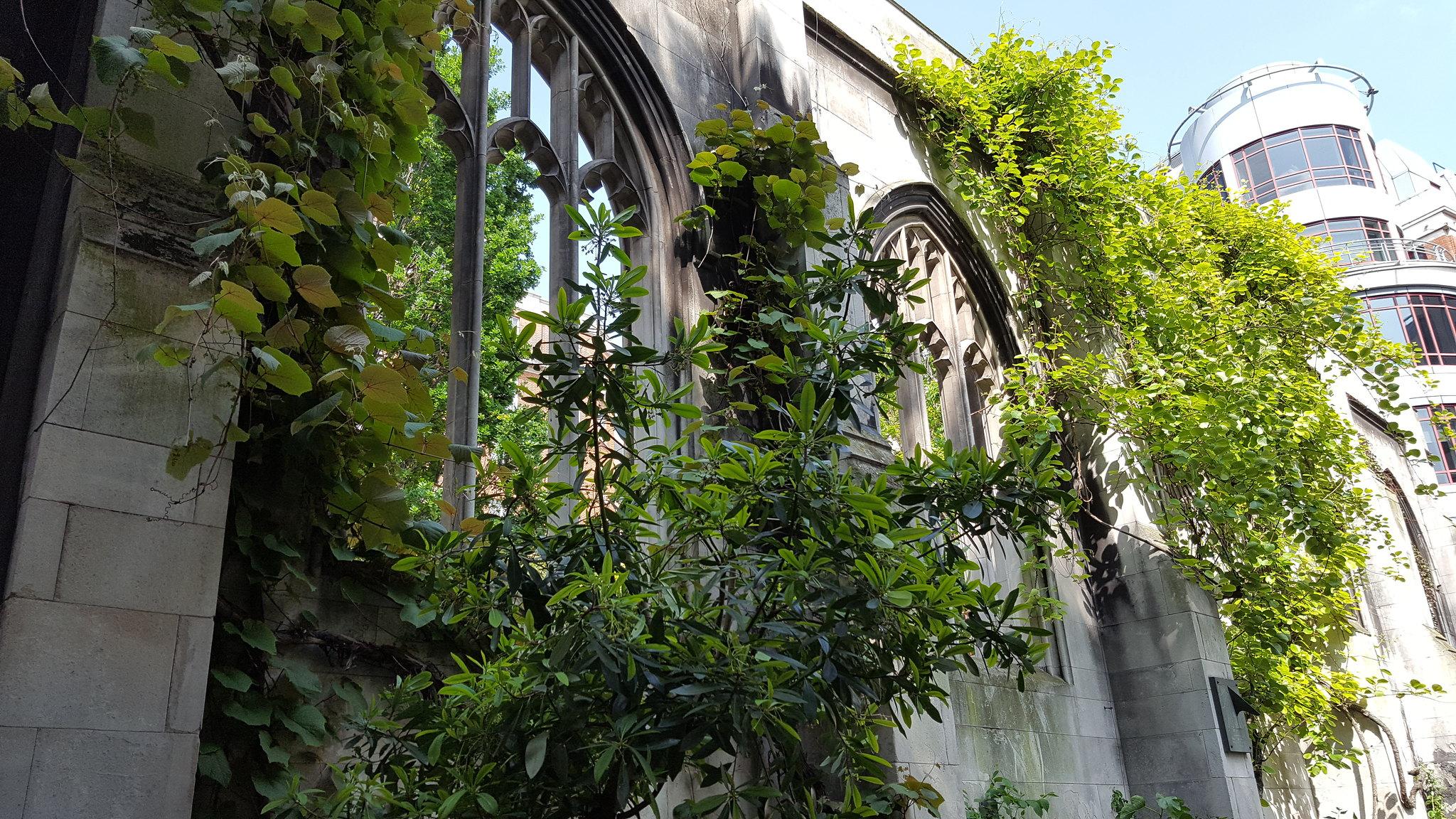All Hallows by the Tower
City of London, Greater London
The oldest church in the City of London.

You really will feel secluded in this gem of a City garden.
City of London, Greater London
If you’ve ever wandered around the City of London on a weekend, you’ll know it’s an oddly serene place. A strange peace descends upon the City. But there’s one place that stands out from the crowd, as beautiful as it is tranquil: the bombed out ruins of the church of St Dunstan in the East.
The church was named for St Dunstan, a 10th century monk with a colourful past. He survived brushes with black magic, leprosy, and the Devil himself to become Archbishop of Canterbury. The church, following his example, boasts its own difficult history.
Originally built around 1100 and is a Grade I listed building. A new south aisle was added in 1391 and was repaired in 1631. It was severely damaged in 1666 by the Great Fire of London. Rather than being completely built it was patched up. A steeple and tower was added in 1695-1701 by Sir Christopher Wren.
The church was again severely damaged in the Blitz of 1941. Wren's tower and steeple survived the bombing. It was decided not to rebuild St Dunstan’s.
In 1967 the City of London decided to turn the remains into a public garden, which opened in 1970. Maintenance and improvement works took place in spring 2015 which new planting throughout the garden to revitalise this popular space.
Those with green fingers will appreciate the range of plants wending their way around the ruins, an unusual plant in the lower garden is winter's bark, Drimys winteri. Its leaves are high in Vitamin C and were once eaten to prevent scurvy.
City of London, Greater London
The oldest church in the City of London.
City of London, Greater London
The original church, founded in the early 12th century, was one of the first buildings to be destroyed by the Great Fire as it stood just 300m (1000ft) from Pudding Lane.
City of London, Greater London
First mentioned in the 12th century, some fabric of the 1270 church remains, including the crypt.